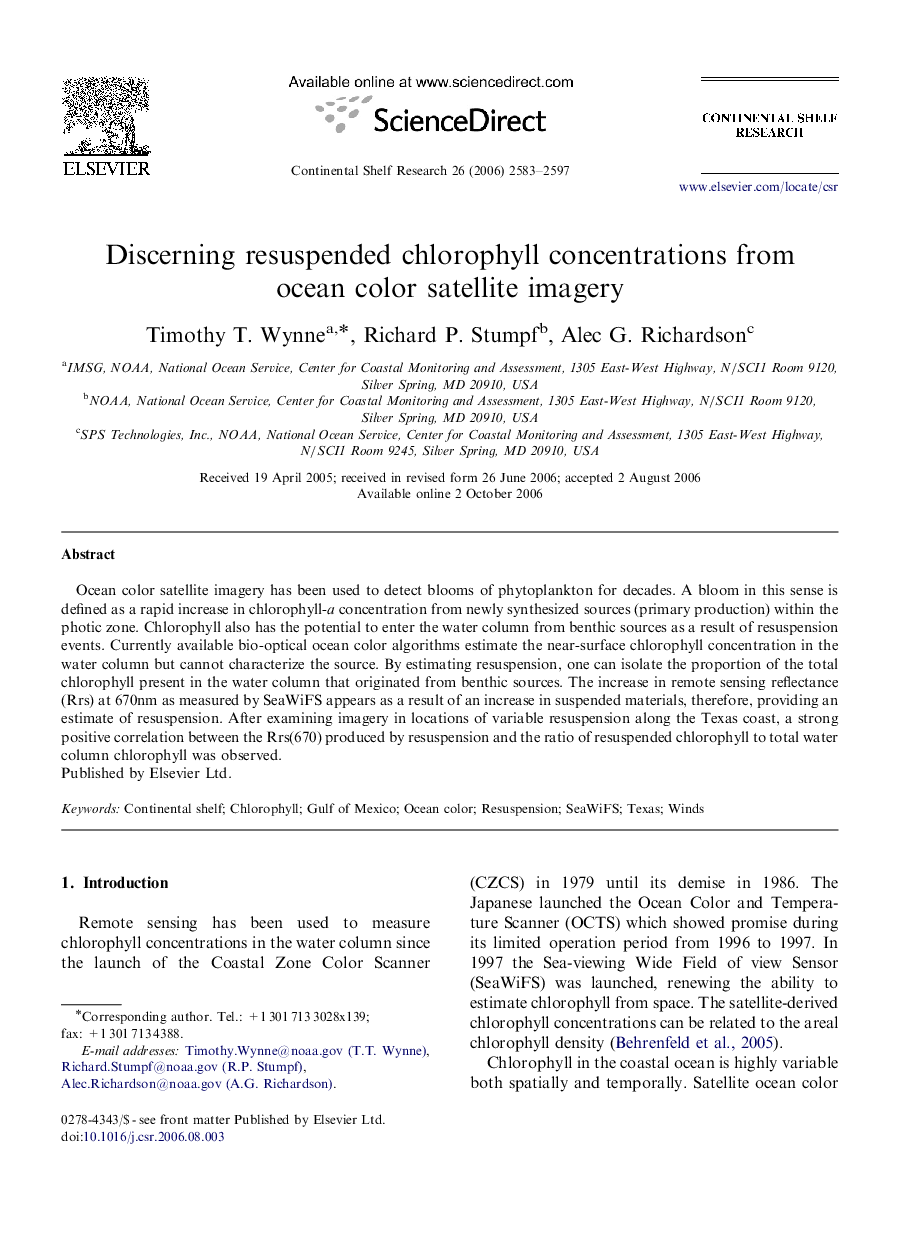| Article ID | Journal | Published Year | Pages | File Type |
|---|---|---|---|---|
| 4533858 | Continental Shelf Research | 2006 | 15 Pages |
Ocean color satellite imagery has been used to detect blooms of phytoplankton for decades. A bloom in this sense is defined as a rapid increase in chlorophyll-a concentration from newly synthesized sources (primary production) within the photic zone. Chlorophyll also has the potential to enter the water column from benthic sources as a result of resuspension events. Currently available bio-optical ocean color algorithms estimate the near-surface chlorophyll concentration in the water column but cannot characterize the source. By estimating resuspension, one can isolate the proportion of the total chlorophyll present in the water column that originated from benthic sources. The increase in remote sensing reflectance (Rrs) at 670nm as measured by SeaWiFS appears as a result of an increase in suspended materials, therefore, providing an estimate of resuspension. After examining imagery in locations of variable resuspension along the Texas coast, a strong positive correlation between the Rrs(670) produced by resuspension and the ratio of resuspended chlorophyll to total water column chlorophyll was observed.
